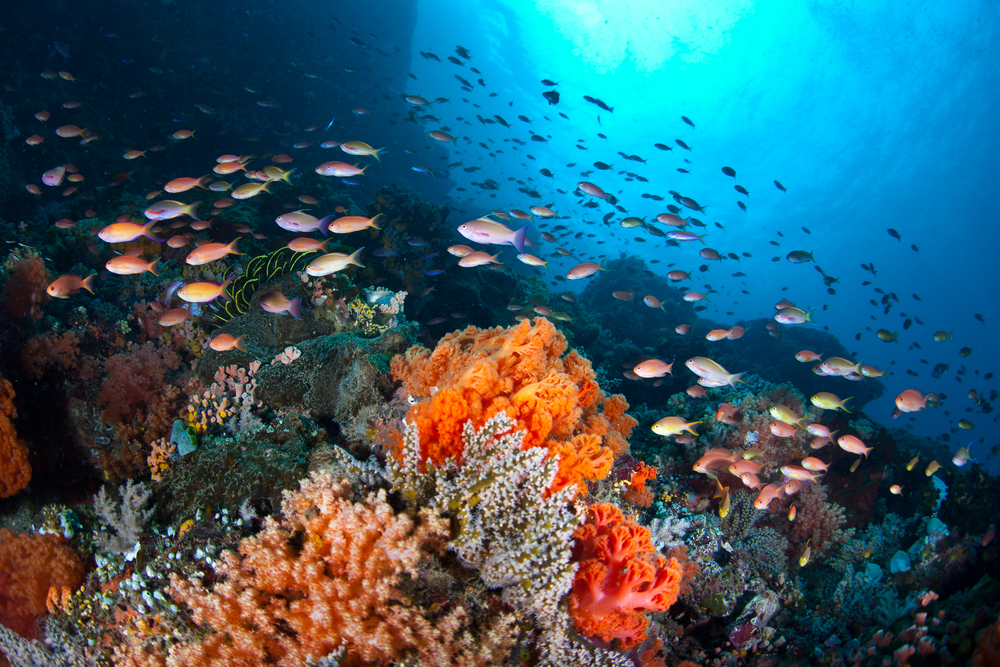FOR IMMEDIATE RELEASE | April 03, 2017
How to clamp down on cyanide fishing
Note to journalists: Please report that this research will be presented at a meeting of the American Chemical Society.
A press conference on this topic will be held Monday, April 3, at 2 p.m. Pacific time in the Moscone Center. Reporters may check-in at the press center, South Building, Foyer, or watch live on YouTube http://bit.ly/ACSLive_SanFrancisco. To ask questions online, sign in with a Google account.
SAN FRANCISCO, April 3, 2017 — Spraying cyanide near coral reefs teeming with tropical creatures can quickly and cheaply stun ornamental fish that can then be scooped up and sold around the world. The practice supplies pet stores but often leaves behind damaged coral and dead fish exposed to too much of the toxin. Countries where aquarium fish are collected have outlawed the method decades ago, but catching perpetrators is difficult. Now researchers are developing a handheld device for detecting cyanide fishing that could help clamp down on the destructive practice.
The team will present their progress on the device today at the 253rd National Meeting & Exposition of the American Chemical Society (ACS). ACS, the world’s largest scientific society, is holding the meeting here through Thursday. It features more than 14,000 presentations on a wide range of science topics.
“Somewhere around 20 to 30 million marine fish are traded globally,” Andrew Rhyne, Ph.D., says. “Ten to 12 million come to the U.S., the biggest importer, and most of those fish come from countries with historic problems with cyanide fishing. While some surveys have been conducted, no one really knows how widespread the problem is.”
Rhyne, who’s with Roger Williams University in Rhode Island, has been studying the global aquarium trade and says destructive fishing, including use of the cyanide poisoning method, is one of the biggest problems facing the industry.
Motivated to help countries such as Indonesia and the Philippines root out the practice, Rhyne discussed the challenge with Clifford Murphy, Ph.D., also with Roger Williams University. And in the summer of 2015, Murphy and undergraduate researcher Amanda McCabe set out to devise a detection method that could be packaged in a handheld system.
“If you’re going to forensically determine that a fish has been caught by cyanide fishing, it would be really helpful to have a portable device so you can test for it on site when fishing boats return to the docks,” Murphy says. He adds that current methods involve sending fish and tank water to laboratories for pre-treatment and testing. This approach is expensive and takes time.
To create a more practical sensor that could be dipped directly into tanks on boats as they come in with their catch, Murphy and McCabe started looking into an electrochemical platform that uses porphyrins to bind thiocyanate. Porphyrins are organic molecules, and many of them are naturally occurring. One example is heme, the pigment in red blood cells. And thiocyanate is a metabolite secreted by fish that have been exposed to cyanide.
The researchers made electrodes by attaching metalloporphyrins — porphyrins with a metal in the center — to a substrate, and exposed the resulting sensor to water collected from nearby Narragansett Bay. The water samples were spiked with varying levels of thiocyanate. When thiocyanate attaches to the porphyrins, their chemistry and colors change — just as purple heme turns red when oxygen binds to it.
“When we started testing the sensor, we noticed what appeared to be a significant ability to detect the thiocyanate, even in untreated salt water,” Murphy says. “Our sensor works in about five to 10 minutes, and the level that we were detecting was around 1 to 2 parts per billion.” He adds that the current best method available has reportedly only detected thiocyanate in seawater at a higher level of 3.2 parts per billion.
Undergraduate researcher Connor Sweet is continuing the project, testing different metalloporphyrins and developing a consistent method for making the electrodes, which he currently does by hand. Engineering student Charles Flynn is working on the electronics side, developing a hand-held device to accommodate the sensor technology. The team will test the method on water samples from treated fish. They say if those results are promising, they could have a prototype ready in one to two years.
The researchers received funding support from the Rhode Island NSF EPSCoR (#EPS-1004057) program.
The American Chemical Society is a nonprofit organization chartered by the U.S. Congress. With nearly 157,000 members, ACS is the world’s largest scientific society and a global leader in providing access to chemistry-related research through its multiple databases, peer-reviewed journals and scientific conferences. ACS does not conduct research, but publishes and publicizes peer-reviewed scientific studies. Its main offices are in Washington, D.C., and Columbus, Ohio.
Media Contact
ACS Newsroom
newsroom@acs.org






